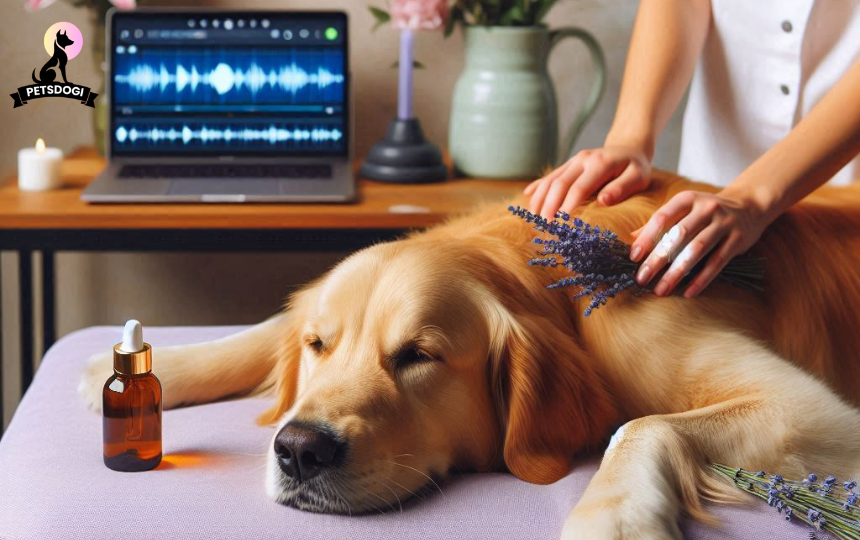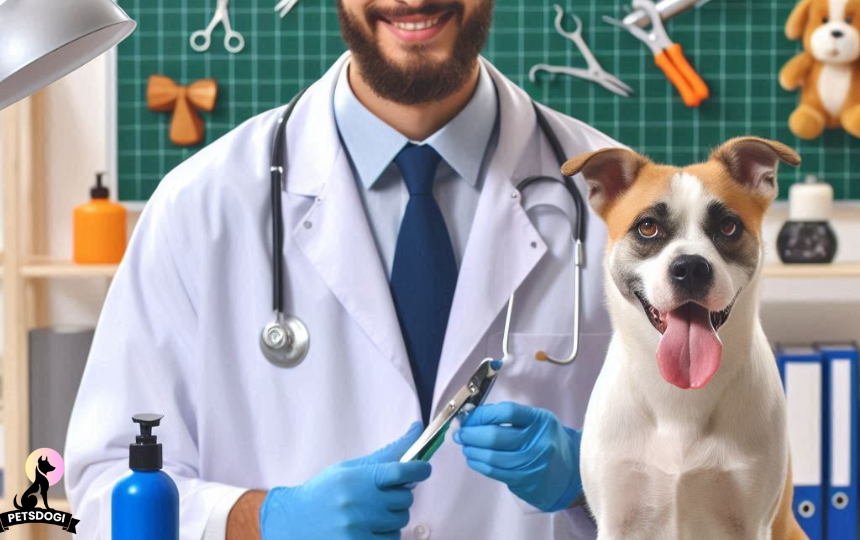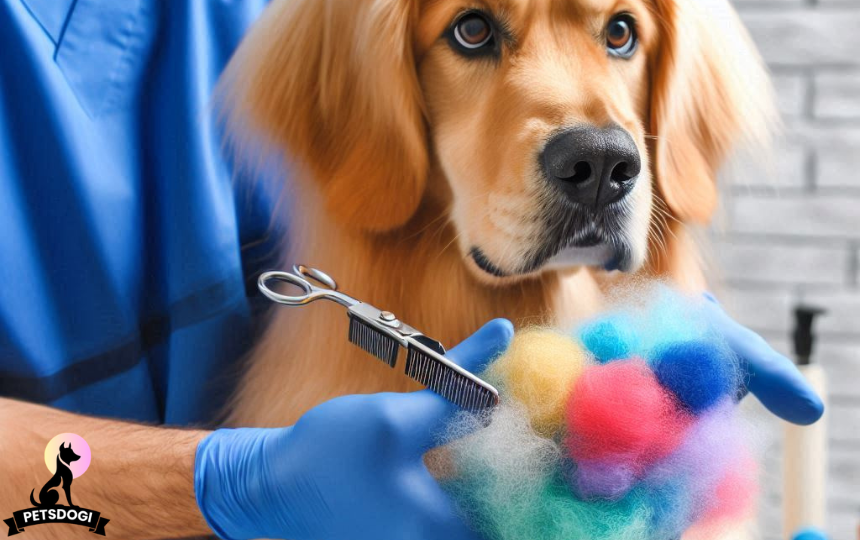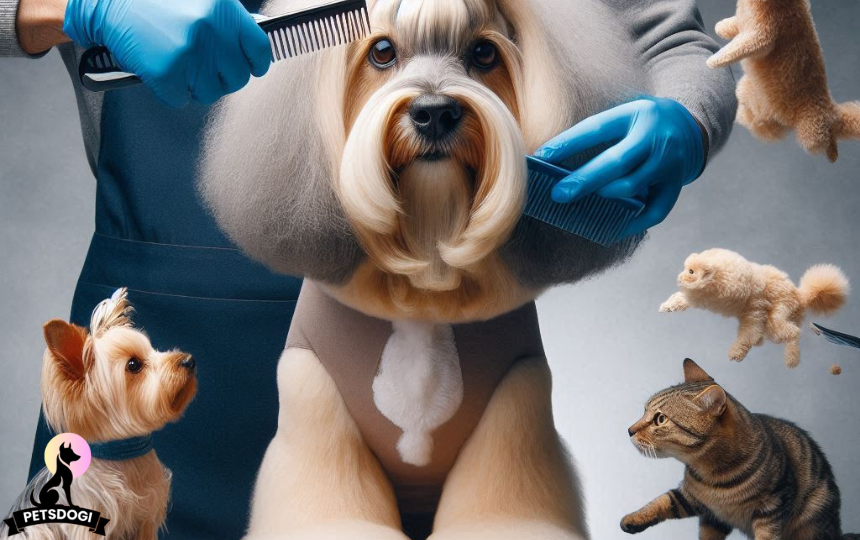Greetings from the realm of canine well-being and relaxation. This post will discuss the practice of dog massage and all of its health advantages for your pet. Learn the easy methods that strengthen the link between you and your dog by going beyond simple physical contact. With this tutorial, you’ll learn how to give a successful dog massage, from improving your pet’s physical health to addressing anxiety issues. Accept the calming effects of touch and open up new communication channels with your dog.
-
Introduction to Canine Massage Therapy
Canine massage therapy is a complete approach to improving your dog’s health, not simply a fast petting session. Understanding the benefits and practices of dog massage will improve your pet’s physical and psychological well-being.
Advantages of Therapeutic Dog Massage:
Massage therapy can benefit dogs in a variety of ways; it is not just for humans. It can relieve joint pain, reduce muscle tension, and enhance circulation, in addition to encouraging relaxation. Furthermore, massage strengthens the overall link between you and your dog by fostering trust.
Developing a Touch Tolerance:
Giving dogs massages can help them form a favorable relationship between human touch and touch. This is especially helpful for pups or rescue dogs who might have gone through trauma. Establishing a foundation of trust is achieved by teaching them to tolerate physical contact.
Dog Massage Promotes Stronger Bonds:
Massaging your dog helps to improve the relationship between the two of you. It’s a nonverbal communication style that strengthens bonds and cultivates trust. Frequent massages foster a happy, peaceful atmosphere that makes pets happier and more at ease.
A Practical Exam for Your Dog:
During a massage, you can examine your dog’s body with your hands. This makes it possible for you to find any anomalies, lumps, or alterations in their coat and skin. Frequent examinations during massage sessions might help identify possible health problems early on.
As we explore the methods and factors involved in dog massage, you’ll see how this discipline offers a form of care and communication that goes beyond words in addition to its physical advantages.
-
Preparing for a Dog Massage
Prior to Giving Your Dog a Massage:
Setting the stage for a successful dog massage session is essential before you begin. Make sure your dog is relaxed and comfortable before you start. Select a distraction-free, calm, and comfortable space where your dog feels safe.
Create a Calm Environment:
Play some relaxing music and turn down the lights to create a tranquil atmosphere. Just like us, dogs react favorably to a calm atmosphere. A calm environment improves the massage’s efficacy and adds to your dog’s overall delight.
Verify that your pet is comfortable:
Dogs benefit from a warm-up before a massage, just like people do. Stroke and pet your dog gently to promote blood flow and release tension in the muscles. This lessens the chance of stiffness and makes the transition into the massage more comfortable for them.
Drinking water and listening to music:
Outside sounds can be muffled with soft background music, creating a peaceful atmosphere for the massage. Make sure your dog is properly hydrated before to the session as well. Drinking enough water helps the body’s circulation and makes the massage more effective overall.
Keep an eye on your dog’s response to massages:
As the massage progresses, be mindful of your dog’s indications. Keep an eye out for happy sighs and carefree body language as indicators of happiness. Being aware of any indications of discomfort or resistance is equally crucial. It’s important to keep an eye on your dog’s reactions to make sure the massage stays enjoyable.
How long should I massage the dog?
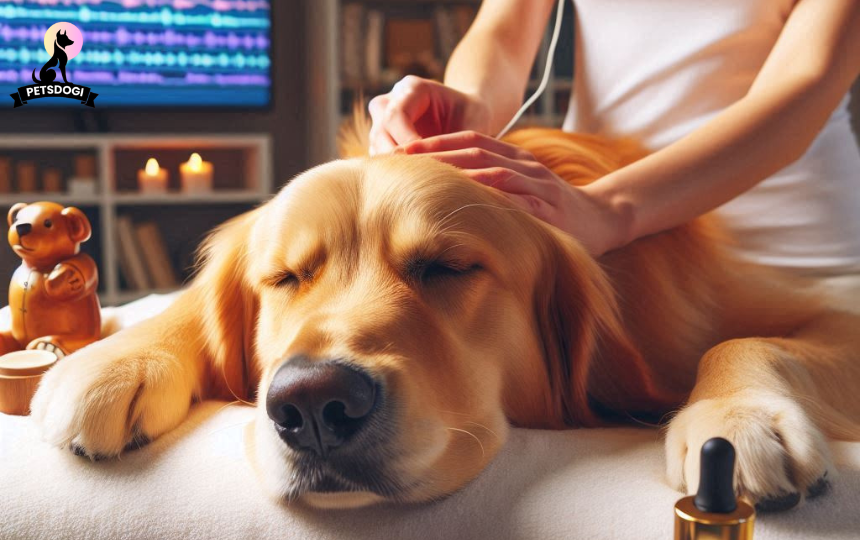
A dog massage session’s length varies according to your dog’s requirements and preferences. As your dog grows more acclimated, progressively lengthen the sessions from the shorter, five to ten minute start. Take note of their signs to figure out how long a soothing and healing massage should last.
Setting up your dog’s space and yourself properly can help ensure that your massage session is successful and pleasurable. These factors lay the groundwork for a satisfying encounter that benefits both your dog’s physical and mental health.
-
Step-by-Step Guide: How to Massage Your Dog
Step 1: First, get your dog ready for a massage. Make sure your dog is quiet before you start. To build rapport and ease their muscles, give them gentle pats and strokes. This is an important phase in establishing the massage’s tone.
Step 2: Massage Your Dog’s Head First Start the massage by giving your dog a gentle head rub. Apply gentle circular movements on their chin, underarms, and forehead. Observe their response, and if they appear at ease, move on to the next steps.
Step 3: Massage Your Dog’s Neck with Light Pressure Next, gently apply pressure with your fingertips on the neck. To alleviate the tension in this area, move in circles. Take care not to apply too much pressure, particularly if your dog is not used to receiving massages.
Step4: Give your shoulders a massage Applying mild pressure with the flat portion of your hand, make a Flat hand Transition to the shoulders. slide fluidly and smoothly as you slide down their back. This improves circulation and aids in muscle relaxation.
Step 5: Give Your Dog’s Paws and Toes a Massage Give every paw, including the toes, a gentle massage. Keep an eye out for your dog’s sensitive spots and reactions. With their many pressure points, the paws can be very useful and calming to massage.
Step 6: Give the ribs a massage on both sides As Your Dog Tells Its Side Stories As your dog lies on its side, concentrate on rubbing its ribs on both sides. Employ soft, rhythmic movements to encourage relaxation. Consider how comfortable your dog is, and modify the pressure to suit.
Step 7: Go on to the Legs and Hips As Your Dog Remains in a Reclined Position Continue the massage in a calm, steady manner while you work on the legs and hips. Make sure your dog is at ease during the entire procedure. If they exhibit any signs of discomfort, change your approach or omit some parts.
Step 8: To Finish Pat your dog on the body with a flat palm while speaking to them in a soothing voice. Talk to your dog in a calming tone as you wrap up the massage. They feel reassured and the great experience is reinforced by this. Using a flat palm, give them a pat on the body to show them that you are connected and concerned.
By using these techniques, you may strengthen your relationship with your dog through good contact and communication in addition to the physical benefits. To ensure a pleasant and enjoyable experience, keep an eye on your dog’s reactions and adjust your approach as needed.
-
Different Techniques for Dog Massage Therapy
How Can Dog Massage Therapy Help Your Pet?
Before adopting any specific tactics, it is critical to understand the benefits of dog massage therapy. Massage therapy enhances your dog’s overall health by improving circulation, reducing muscle tension, and relaxing. It strengthens both the physical and emotional bonds between you and your pet.
Simple Dog Massage Techniques You Can Try At Home:
Even though professional dog massage therapists undergo extensive training, there are simpler techniques you can practice at home to help your dog feel more comfortable and relaxed.
Backstroke:
Stroke your dog’s back gently with long, flowing motions. This method is especially calming and helps to alleviate tension along the spine.
Rub Dog’s forehead:
A soft touch on your dog’s brow can be really relaxing. Massage the area between their eyes in circular motions with your fingertips.
Thigh and Glute Massage:
Massage the thighs and glutes with little pressure. This relieves tension in the hindquarters, which is especially good for energetic or senior dogs.
Massage your dog’s ears:
Massaging your dog’s ears can be a pleasurable experience for them. Rub the base of their ears lightly with your fingertips to promote relaxation.
Maintain your cool and see how your dog reacts to the massage:
It’s critical to keep your cool when getting a massage. Massages are more beneficial in a quiet situation because dogs are very sensitive to their owners’ emotions. Keep a close eye on your dog’s reactions at all times. If they show signs of stress or pain, change your method or terminate the massage.
By including these simple techniques into your at-home dog massage routine, you may provide your pet with the benefits of calm and improved health. It is critical to pay attention to your dog’s reactions since their comfort and happiness are paramount.
-
Advice and Pointers for Giving Dog Massages
The advantages of pet massages
The benefits of pet massage go beyond their therapeutic effects. Regular massages for your dog increases their overall health and well-being. They calm tense muscles, promote relaxation, and reduce anxiety. Massages can help to enhance your bond with your dog by instilling trust and closeness.
Beginner’s Guide to Massage Technique:
If you’ve never massaged a dog before, begin with easy and gentle methods. Start with gentle, leisurely strokes and see how your dog reacts. Take note of their nonverbal cues and modify your approach accordingly. You can adjust the massage to your dog’s demands as you get to know their preferences.
Reminders to Keep in Mind:
- Decide on a peaceful and cozy setting for the massage.
- Increase the length of massage sessions gradually after beginning with shorter ones.
- Apply light pressure, particularly if your dog is not used to receiving massages.
- To reassure your dog throughout the massage, speak to them in a calming tone.
- Pay close attention to your dog’s reactions and react quickly if it shows any signs of distress.
When to Massage Dog:
As far as dog massages are concerned, timing is everything. Select times when your dog is at ease and content, staying away from circumstances where they could be anxious or excessively energetic. As part of a relaxing ritual before bed, or following physical activity, massages can be especially beneficial.
Triggers for Pet Anxiety:
Recognizing the things that make your dog anxious is crucial. If your dog is prone to nervousness, you might want to introduce massages to them gradually and according to their comfort level. When done carefully and patiently, massages can be an effective therapy for controlling anxiety.
When to Avoid Massage:
Even while massages have many advantages, there are some circumstances in which they should not be received. If your dog is sick, injured, or showing symptoms of discomfort, wait until they recover before giving them a massage. Put your dog’s comfort and welfare first at all times.
By incorporating these suggestions and ideas into your routine, you can make sure that your dog receives a nice and useful massage as well as you. Keep in mind that every dog is different, and the secret to a good massage is to modify your style according to each dog’s preferences.
In summary:
Finally, adopting canine massage techniques provides a comprehensive way to improve your pet’s overall health. Dog massage therapy promotes a happier and healthier pet partner for a variety of reasons, including the physical benefits of increased flexibility and circulation as well as the emotional benefits of strengthened relationships and less stress. Through learning the principles, applying gentle methods, and paying attention to your dog’s reactions, you set out on a path that extends beyond simple relaxation.
It turns into a deep conversation, a shared experience that builds rapport, trust, and a proactive attitude toward your dog’s general well-being. Set the mood with a relaxing atmosphere, loosen up your muscles, and relish the many advantages of giving your dog a relaxing massage. The health of your dog and the strengthened bond between you will be well worth the effort.

